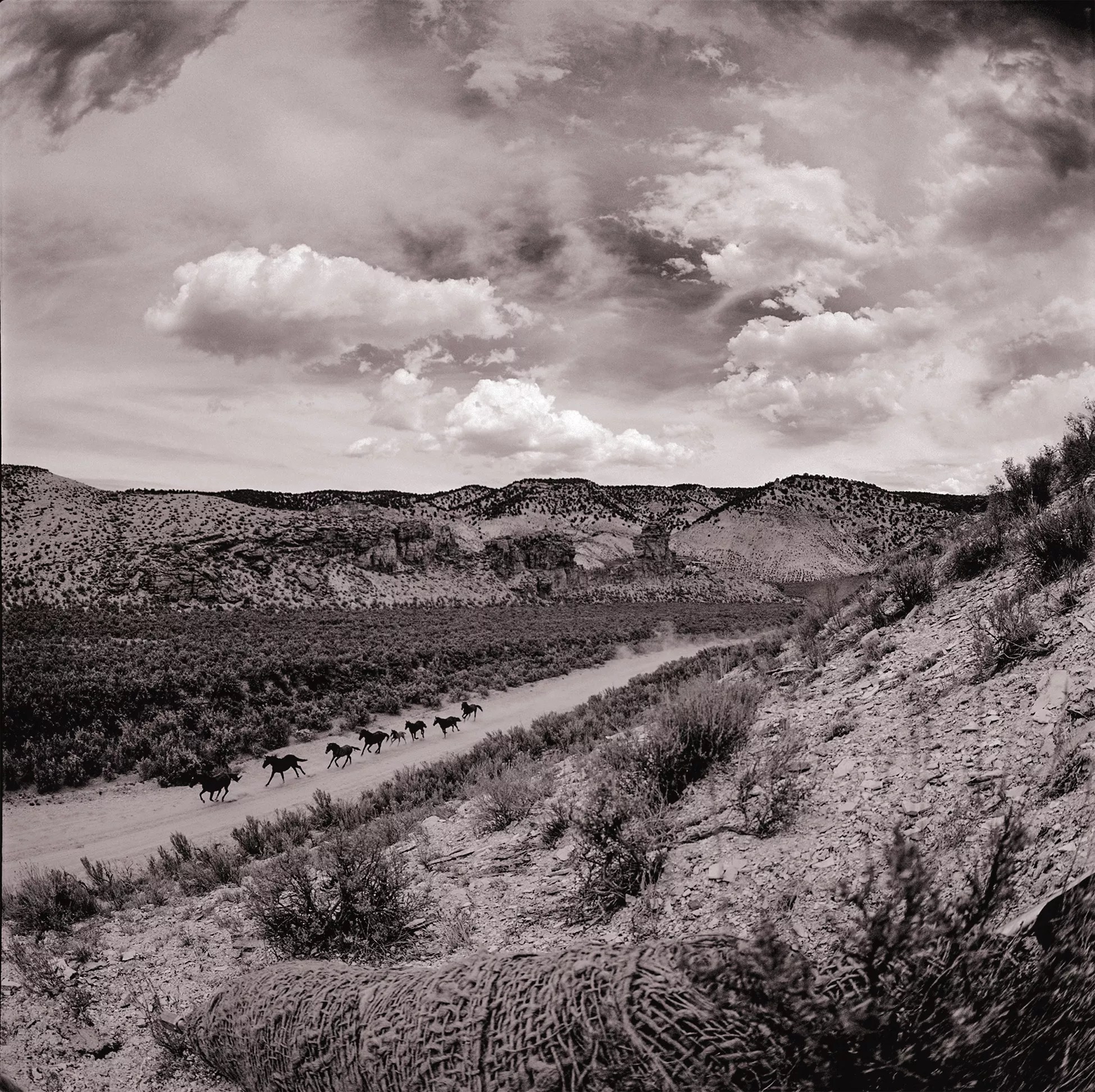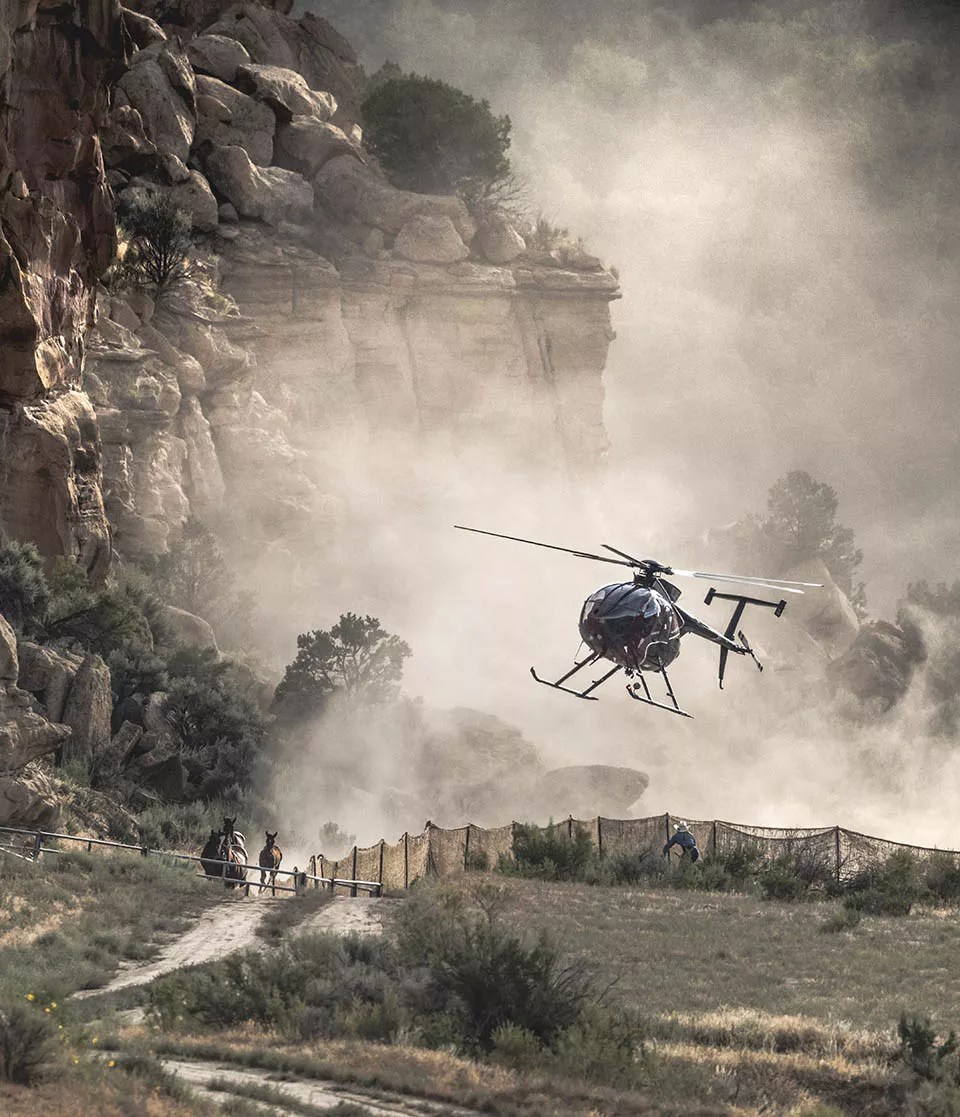
Jeffrey Hersch

Audio By Carbonatix
As I am writing this,122 terrorized wild horses in northwest Colorado known as the West Douglas herd are being chased by helicopters, funneled into corrals and removed from the land on which they have lived for decades.
The federal agency zeroing out this herd is the Bureau of Land Management, the same agency that killed 39 horses in Nevada weeks ago during a similar “capture” and allowed 145 horses kept in crowded conditions in a Cañon City holding facility to die of equine fever, a preventable disease had they been vaccinated as they were supposed to be. This is just a fragment of a litany of violations by the Bureau in its never-ending removal of wild horses from Western states.
The horses are captured by means of a helicopter, which locates and then chases the horses, often for miles over the desert, to a rope funnel that leads into a holding corral. As the herd nears the funnel, a “Judas” horse is released that is trained to lead the horses, which follow by instinct, into the funnel, a corral and their fate. In the process, some horses are killed as the horses are chased in too high temperatures; the helicopter flies so low it almost touches the horses, chases foals and pregnant mares, and leads to animals breaking their legs or necks either in the chase or in the corral in their frenzy to escape the first fence they have ever experienced.
The captured horses are shipped to holding facilities, such as Cañon City. Some lucky ones are adopted by families, while others get auctioned off and may end up bought by “kill buyers” who profit both from the BLM and from sending these horses in crowded transport trucks under horrendous conditions to slaughter in Mexico, where some horses are killed by methods that would be illegal in the U.S.
Will you step up to support Westword this year?
At Westword, we’re small and scrappy — and we make the most of every dollar from our supporters. Right now, we’re $21,000 away from reaching our December 31 goal of $50,000. If you’ve ever learned something new, stayed informed, or felt more connected because of Westword, now’s the time to give back.
Presently, over 60,000 wild horses are being kept in holding facilities under crowded, unhealthy conditions totally foreign to their former life on the plains, at a cost of $76 million. The Bureau does not require shelter and shade in these operations as it would for adopters, nor does it fully disclose or allow proper inspections by horse advocacy groups.
Additionally, the Bureau bases its capture on false numbers from its own biologists. This is called the AML, which stands for appropriate management level, and is often anything but appropriate. The Bureau says that it has to remove X number of horses because they are starving and dehydrated; outside biologists refute this, and the photographs by such people as Scott Wilson indeed show healthy, strong horses in contradiction to the Bureau statements. Unfortunately, the Bureau is so insulated from public comment that it can base its actions on the information it chooses and ignore non-Bureau information.

Helicopters are used to chase the wild horses.
Scott Wilson
I have called and written both of our Colorado senators, as well as this state’s representatives and Governor Jared Polis. Most seem either powerless or unwilling to confront the Bureau, and this is exacerbated by the fact that both Bureau director Tracy Stone Manning and her boss, the Secretary of the Interior, are almost impossible to contact, let alone persuade to effect change. In a previous roundup in Colorado, Polis requested the Bureau halt its action until “a more humane method could be implemented.” Even the governor of the state was ignored, and the capture proceeded. Perhaps it is no coincidence that some of the most politically powerful entities in the Western states – logging, mining and ranching – have the Bureau’s ear. Chevron has one of its largest oil-and-gas holdings on the land from which the West Douglas herd was removed.
Given that political situation and the Bureau’s insularity, what remains that could affect the Bureau is immense public pressure. That requires an informed public, which I have discovered is not the case. The harsh reality of horse roundups is almost never shown on local TV news, though it occasionally appears in the Denver Post; journalist Dave Phillips has written extensively about wild horses and kill buyers in the New York Times and High Country News. But it remains that most people don’t know what is happening, which allows the Bureau to continue its methods unimpeded.
Pat Craig, who owns the largest animal sanctuary in the country, the Wild Animal Sanctuary in Keenesburg, has purchased a large tract of land in northwestern Colorado on which he hopes to place hundreds of rescued wild horses. He is willing to take the entire West Douglas herd intact, but it is up to the Bureau if it will allow this. There are other strong advocates for the wild horses fighting the fight every day: Laura Leigh (wild horse education), photographer Scott Wilson (wilsonaxpe.com), Scott Beckstead (Center for a Humane Economy, Animal Wellness Action), the Cloud Foundation and the American Wild Horse Campaign.
If enough people call their senators and representatives, ally themselves with existing wild horse advocacy groups or write the Bureau director (tstonemanning@blm.gov), perhaps they will finally be pushed into action that is long overdue. The alternative is a bleak future for wild horses, which may lose their historic place in the West and be found only in sanctuaries.
It is up to you.
There will be a Wild Horse Freedom Rally from 10 a.m. to 3 p.m. Saturday, September 23, at the Colorado State Capitol. Jeffrey Hersch is a former Peace Corps volunteer in Nepal who also worked at animal sanctuaries in Nepal, Thailand and Bolivia; he’s been an animal-rights activist since the days of Rocky Mountain Animal Defense, 24 years or more ago. A writer and photographer, he’s working on a book of his photos and short stories. Reach him through jeffhersch.com.
Westword.com frequently publishes commentaries on matters of interest to the community. Have one you’d like to submit? Send it to editorial@westword.com, where you can also comment on this piece.